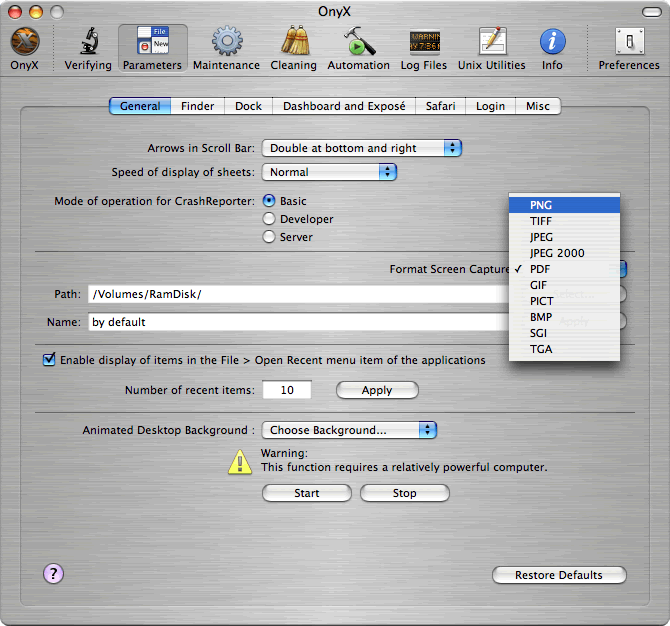

That's not a significant problem - I would just install 10.6.2 first, and then update back to 10.6.8 via a combo updater. My only Snow Leopard install DVD is the one that came with my computer, and that is v 10.6.2. If I need to re-install Snow Leopard at some point, I don't have version 10.6.8 directly available on an installer. Every action is well explained and OnyX also includes a help guide for anything you're not sure. The first time you run OnyX it'll verify S.M.A.R.T status of your disk to prevent failure and analyze the structure of your volume. For example, I have a dual-boot setup, and am currently running Snow Leopard 10.6.8 on some of my disks. Onyx is completely free and will help you keep your Mac clean and in perfect running order. And even though my Recovery HD is labeled 10.7.2, it will apparently download and install whatever full Lion version is the "current one", in this case 10.7.3.īut even if it instead downloaded and installed v 10.7.2, one would then just be in the same situation that has been the case all along for OS versions prior to Lion- you would just run software update or download the appropriate updater to bring the system version back to the current one.
#Onyx for mac 10.7.3 full version#
If I damage that OS, and need the Recovery HD to reinstall Lion, the Recovery HD will have to then download a full version of Lion from Apple's servers. For example, I am currently running Lion 10.7.3.

There may be something that the Recovery HD version 10.7.3 does "better" than version 10.7.2, but re-installing Lion itself doesn't seem to be a significant issue. I agree with Peter, and don't really see an operational problem here. I expect that it would always download the "current" version of Lion if a reinstall were needed, as was mentioned earlier. However, even though my Recovery HD version was not updated, it likely doesn't matter. When opened with a property list editor, it looked like this: When I looked there with Finder in my own OS X 10.7.3 system, I saw that the Recovery HD version was still 10.7.2:

You can then peek into that file with QuickLook or with Finder's column view, or you can open it with a property list editor. A disk icon for Recovery HD will appear on the Desktop, and you can open it with Finder. Select the Recovery HD partition you want to explore, and click Mount in the Disk Utility toolbar. This can be done in Terminal viaĭefaults write DUDebugMenuEnabled -bool trueĪnd can also be done using Onyx (Parameters tab>Misc tab >Disc utility section.Īll the partitions, including any Recovery HD partitions, will then be visible in the left pane of Disk Utility. I found a way to directly determine the version number of a Recovery HD partition.įirst, enable Disk Utility's Debug menu.


 0 kommentar(er)
0 kommentar(er)
